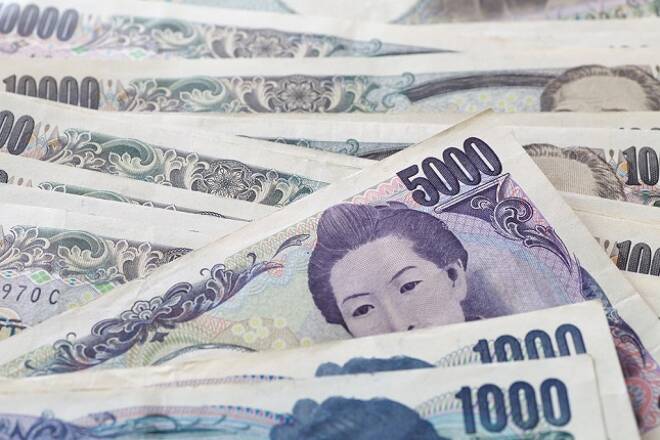Advertisement
Advertisement
USD/JPY Fundamental Daily Forecast – Could Spike Lower if PM Abe Decides to Resign
By:
If the focus remains on Fed policy and this week’s upcoming interest rate decision, monetary policy statement and economic projections then prices should remain stable today.
The Dollar/Yen is trading lower early Monday. Traders have produced an inside move which suggests investor indecision and impending volatility. The Forex pair is trading on the weak side of a short-term 50% level at 106.265, which is giving it a slight downside bias.
The USD/JPY is trading 105.889, down 0.064 or -0.07%.
The early price action suggests investors are preparing for Federal Reserve Chair Jerome Powell’s first monetary policy meeting on Wednesday and as the increased threat of trade protectionism kept markets on edge.
Japanese Yen traders also appear to be a little tentative about picking a side in the market today after weekend polls suggested a massive drop in public support for Prime Minister Shinzo Abe over his handling of a festering cronyism scandal.
A Nippon TV poll found Abe’s support crumbling some 14 percentage points from last month to 30 percent, the lowest for that poll in Abe’s more than five years in office.
Political instability may not make the Yen a more attractive investment, however, the demand for the currency could increase because if Abe is forced to resign, his aggressive monetary stimulus is likely to go with him along with the cheaper Japanese Yen.
In other news, earlier in the session, traders had a chance to react to the Bank of Japan Summary of Opinions and the Trade Balance.
The BOJ’s Summary of Opinions at its March 8 -9 policy meeting showed no change in the board’s stance on monetary policy. According to its statement, “powerful monetary easing” will be maintained as it’s “still a long way” from meeting its 2% inflation target.
Additionally, there were concerns expressed about the Yen’s appreciation and a global stock market decline as they would “constrain wages and prices” and risk delaying a meeting of the price target.
The board also felt the need to explain the difference between “normalization” and “tightening”. It said that “normalization” is the process of monetary accommodation and completely different from monetary tightening, which aims at reducing the positive output gap.
Japan’s trade balance returned to surplus in February, with strength in the global economy supporting export growth even as lunar new year holidays caused a drop in sales to China.
The value of exports increased 1.8 percent in February from a year earlier versus a forecast of 1.4%. Imports grew 16.5 percent versus a forecast of 16.0%. The February trade balance was a surplus of 3.4 billion Yen ($32 Million) versus the forecast of 89.1 Billion Yen.
Forecast
If the focus remains on Fed policy and this week’s upcoming interest rate decision, monetary policy statement and economic projections then prices should remain stable today. Renewed concerns over protectionism, trade wars or more changes in the White House could lead to increased volatility and strength in the Japanese Yen.
Additionally, the USD/JPY could spike lower if Prime Minister Shinzo Abe announces his resignation in reaction to the developing political scandal.
About the Author
James Hyerczykauthor
James is a Florida-based technical analyst, market researcher, educator and trader with 35+ years of experience. He is an expert in the area of patterns, price and time analysis as it applies to futures, Forex, and stocks.
Did you find this article useful?
Latest news and analysis
Advertisement
